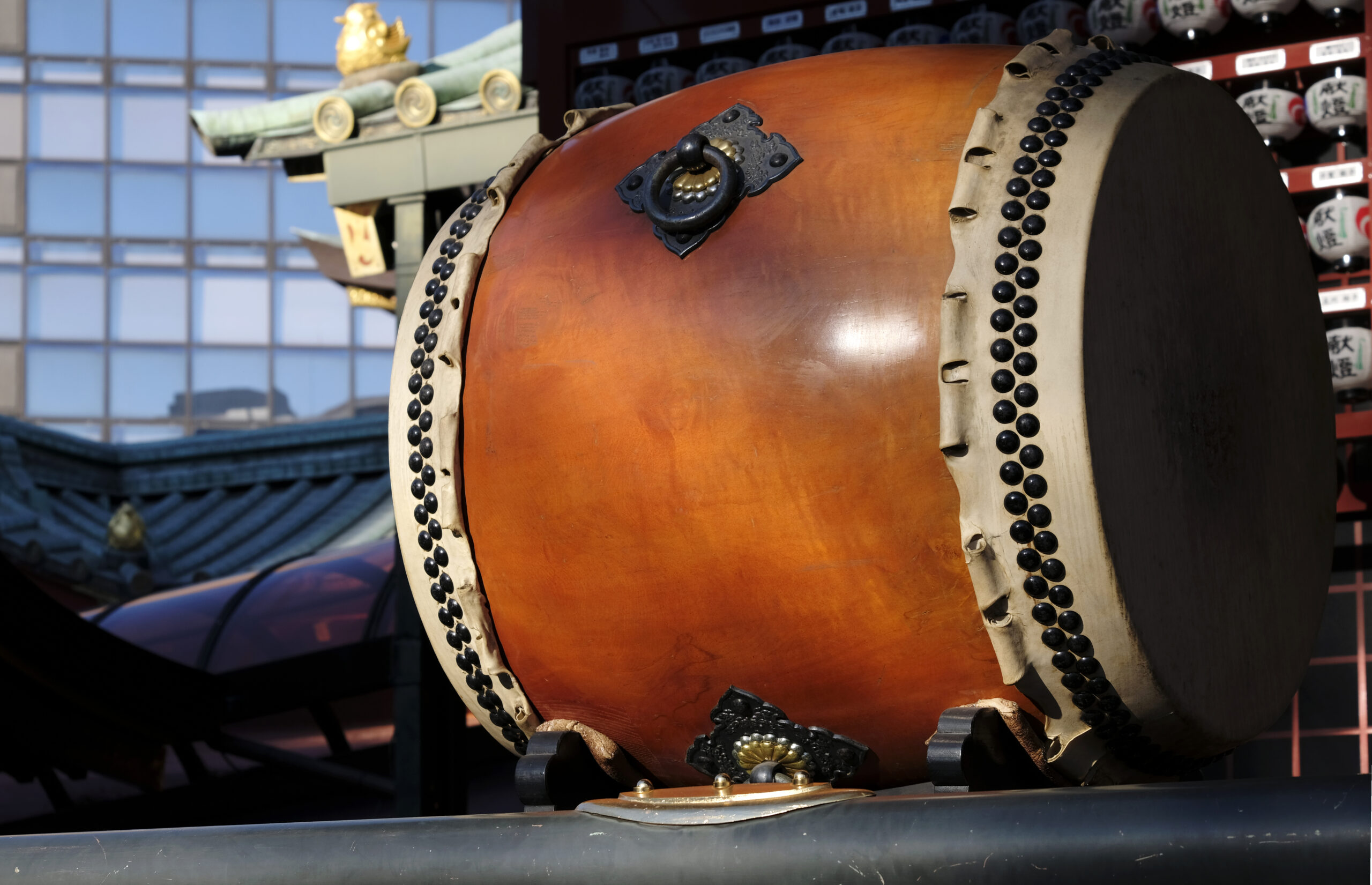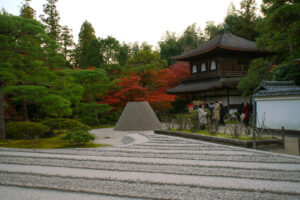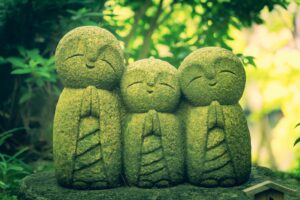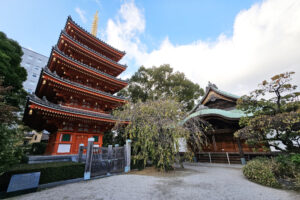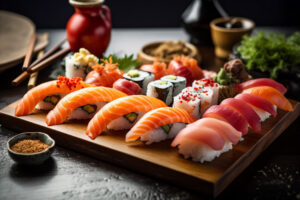Taiko drumming, with its powerful rhythms and vibrant performances, is more than just a musical art form; it encapsulates the essence of Japanese culture and tradition. Originating from ancient practices that date back centuries, taiko has evolved into a rich tapestry of sound that reflects both historical significance and contemporary interpretations. This article explores the cultural significance of taiko drums, examining their history, regional styles, spiritual connections, and the ways in which they foster community and cultural identity.
Exploring Taiko Drums: A Journey Through Sound and Culture
Taiko drums are not merely instruments; they are vessels of cultural expression that resonate deeply within Japanese society. The word "taiko" translates to "drum" in Japanese, but it encompasses a variety of large, barrel-shaped drums that produce a distinctive sound. Unlike most Western percussion instruments, taiko is characterized by its deep resonance and striking visual appeal, often showcased in dynamic performances that engage both the audience and the performers.
The sound of taiko is a call to the spirit, a means of communication that transcends language barriers. Each strike of the drum not only produces sound but evokes emotions, creating a visceral experience that connects performers with their heritage. The rhythmic patterns can signify different narratives, from celebrations of nature to historical tales of honor and courage. For many, participating in taiko drumming is akin to immersing oneself in a living tradition, where the past and present converge through the language of rhythm.
Taiko has gained prominence beyond Japan’s borders, captivating audiences around the world with its exhilarating performances. As a cultural ambassador, taiko serves to educate and engage people of diverse backgrounds about Japanese customs and history. The art form encourages collaboration and inclusivity, inviting individuals to participate in its rhythms, regardless of their musical expertise. This universal appeal has fostered a growing global community of taiko enthusiasts, all united by a shared appreciation for this dynamic art form.
The journey through taiko drumming also encompasses a physical and emotional rigor that is both invigorating and cathartic. The discipline required to master the craft promotes physical fitness, mindfulness, and a sense of belonging. Participating in a taiko ensemble fosters teamwork and camaraderie, as members synchronize their movements and rhythms, creating a harmonious sound that reverberates with collective energy.
In essence, taiko drumming invites individuals to connect with the past while engaging in a transformative present. It is a journey through sound that weaves together personal and communal narratives, celebrating both individual expression and shared cultural heritage. As we delve deeper into the history and significance of taiko, we uncover the myriad ways this art form continues to resonate across generations and cultures.
The importance of taiko to Japanese culture cannot be overstated. Its dynamic rhythms and powerful performances are emblematic of a rich tradition that transcends mere entertainment, offering a glimpse into the heart and soul of a community.
The History of Taiko Drumming: Origins and Evolution
The origins of taiko drumming can be traced back to ancient Japan, where it played an essential role in various aspects of daily life, including agriculture, religious ceremonies, and warfare. Originally, these drums were used to communicate over long distances, signaling important events such as harvests or battles. As communities evolved, so too did the use of taiko, transitioning from a practical tool to an integral component of cultural expression and celebration.
During the Edo period (1603-1868), taiko became firmly established within Japanese festivals and local rituals. The drums were often associated with Shinto and Buddhist ceremonies, where they were believed to invite spirits and deities. It was during this period that distinct regional styles began to emerge, reflecting the unique cultural identities of various communities throughout Japan. The interplay of local traditions and the influence of historical events contributed to the diverse repertoire of taiko, allowing it to flourish as both a sacred and secular form of music.
The Meiji Restoration in the late 19th century marked a significant turning point for taiko drumming. As Japan opened its doors to Western influences, traditional taiko practices faced challenges in the wake of modernization. However, this period also sparked a resurgence of interest in folk traditions, leading to a revival of taiko as a performance art. In the mid-20th century, taiko groups began to form, formalizing the art into a cohesive ensemble style that emphasized choreography, musicality, and theatricality.
One of the most notable developments during this time was the establishment of the first contemporary taiko ensemble, Kodo, in 1981. Kodo’s innovative approach combined traditional taiko techniques with modern performance elements, showcasing the drums on international stages. This not only helped to elevate taiko as a respected art form but also paved the way for a new generation of taiko artists who continue to explore and expand its boundaries.
Despite its evolution, the core essence of taiko remains rooted in community and tradition. Each generation of taiko performers carries forward the knowledge and techniques passed down from their predecessors, ensuring that the rhythms of the past continue to resonate in the present. This continuity is vital to the survival of taiko as a cultural practice, enabling it to adapt while still honoring its historical foundations.
As we trace the journey of taiko from its origins to its current status, we see a reflection of Japan’s broader cultural narrative—one that values both tradition and innovation, community and individuality. Taiko drumming serves as a powerful reminder of the artistry and resilience embedded within Japanese heritage.
Traditional Taiko: Distinct Styles Across Different Regions
Taiko drumming is characterized by its diversity, with distinct styles emerging from various regions throughout Japan. Each style reflects the cultural nuances and historical influences of its locality, contributing to a rich and varied tapestry of sound. For instance, the "Kumamoto" style from Kyushu is known for its powerful, energetic performances that emphasize the drummer’s physical movements, while the "Nagoya" style features intricate rhythms that showcase precision and technical skill.
In the northern region of Tohoku, the "Yamagata" style of taiko is often associated with the lively "Hanagasa Matsuri" festival, where performers don colorful costumes and dance while playing the drums. This regional style emphasizes community participation and showcases the joy and spirit of celebration. The Yamagata style is often characterized by its use of smaller drums, allowing for rapid rhythms and dynamic interplay among musicians.
Farther south, the "Okinawa" style, influenced by traditional Ryukyu culture, incorporates unique rhythms and melodies that set it apart from mainland taiko. The Okinawan taiko, known as "shime-daiko," features a higher pitch and is often accompanied by traditional Okinawan dance. This fusion of rhythm and choreography creates a captivating spectacle that tells stories steeped in local history and folklore.
In addition to these regional styles, there are variations in the types of taiko drums used. For example, the "nagado-daiko," a deep, barrel-shaped drum, is commonly used in many traditional styles, while the "shimedaiko" is a smaller drum known for its higher pitch. Each drum’s construction, size, and playing technique contribute to the distinctive sound of its respective style.
The preservation of these regional styles is vital for maintaining the authenticity and cultural significance of taiko drumming. Many communities have established organizations dedicated to teaching and promoting their local taiko traditions, ensuring that the knowledge and skills are passed down through generations. This commitment to preserving traditional forms of taiko not only honors cultural heritage but also fosters a sense of pride and identity among community members.
Ultimately, the variety of traditional taiko styles highlights the richness of Japan’s cultural landscape. As each region contributes its unique rhythms and stories, taiko drumming serves as a powerful symbol of local identity and communal spirit, uniting people through the universal language of music.
The Role of Taiko Drumming in Japanese Festivals
Taiko drumming plays a pivotal role in Japanese festivals, known as "matsuri," where it serves as both a form of entertainment and a spiritual offering. These vibrant celebrations, which occur throughout the year, often honor local deities, celebrate seasonal changes, or commemorate historical events. In this context, taiko becomes a conduit for expressing gratitude, invoking blessings, and reinforcing community ties.
During festivals, taiko drumming is typically performed in parades and processions, with drummers accompanying colorful floats, traditional dancers, and other performers. The powerful rhythms of taiko energize the atmosphere, creating a festive ambiance that draws in locals and visitors alike. The drums help to rally the community, fostering a sense of unity and shared purpose as participants come together to celebrate their cultural heritage.
Each festival has its own unique taiko performance style, reflecting the local traditions and customs of the region. For instance, during the famous Gion Matsuri in Kyoto, traditional taiko ensembles known as "Hoko" perform alongside ornate floats that glide through the streets. The deep, resonant sounds of the drums create a dramatic backdrop for the colorful spectacle, captivating audiences and enhancing the overall experience.
In addition to their role in festivities, taiko drums also serve as a means of spiritual expression. Many festivals incorporate rituals that involve offering music and dance to deities as a way of seeking blessings for the community. The act of playing taiko becomes a sacred practice, connecting performers to their spiritual beliefs and cultural values. This melding of the sacred and the celebratory is central to the significance of taiko in Japanese festivals.
Moreover, taiko drumming fosters intergenerational connections within the community. Many families pass down the art of taiko from one generation to the next, ensuring that the traditions remain vibrant and relevant. Children often participate in festival performances, learning the rhythms and techniques of their ancestors while forging their own connections to the cultural heritage.
In essence, taiko drumming is a heartbeat of Japanese festivals, resonating with the pulse of community spirit, spirituality, and cultural pride. As the rhythm fills the air, it serves as a reminder of the importance of tradition, connection, and shared celebration in the lives of those who participate in and witness these vibrant events.
Taiko Drumming as a Spiritual Expression and Ritual
Taiko drumming holds profound spiritual significance in Japanese culture, often serving as a medium for expressing devotion, gratitude, and reverence. The act of playing taiko is not merely a performance; it is a spiritual ritual that connects drummers with their cultural heritage and the natural world. Many traditional taiko practices incorporate spiritual beliefs, reflecting the deep-rooted connections between music, nature, and the divine.
In Shinto traditions, for instance, taiko is believed to invite spirits and deities to partake in celebrations and rituals. The sound of the drums is considered a form of communication with the spiritual realm, creating a bridge between the physical and the ethereal. This connection is especially evident during seasonal festivals, where taiko performances are integral to rituals seeking blessings for bountiful harvests, health, and protection from misfortune.
Ritualistic performances often take place at shrines or sacred spaces, where drummers invoke the presence of deities through their rhythms. The movements and rhythms of taiko drumming are intentional and deliberate, representing a dance of devotion that honors the spirits of the land. The synchronization of breath, body, and drum creates a meditative experience, allowing performers to enter a trance-like state where they feel an intimate connection with the divine.
Furthermore, taiko drumming can be a form of personal expression and reflection, enabling individuals to channel their emotions and experiences into their performances. Many drummers describe the experience as a spiritual journey, where they can release their innermost feelings through the power of rhythm. This cathartic outlet fosters healing and self-discovery, allowing drummers to connect with their own identities and spiritual beliefs.
In some communities, taiko drumming is also used in funerary rites, where the rhythms serve as a tribute to the deceased. The solemn beats of the drums can create a sense of closure and remembrance, honoring the legacy of those who have passed away. This practice underscores the duality of taiko as a source of joy and celebration while simultaneously serving as a means of processing grief and loss.
Ultimately, taiko drumming as a spiritual expression exemplifies the profound relationships between music, culture, and the cosmos. As drummers engage in this ancient practice, they become conduits of tradition, bridging the gap between past and present while honoring the spirits that dwell within their communities.
Cultural Identity: How Taiko Reflects Japanese Heritage
Taiko drumming serves as a powerful symbol of cultural identity, encapsulating the values, traditions, and history of the Japanese people. As a living art form, taiko connects individuals to their roots, allowing them to explore and express their heritage in meaningful ways. The practice of taiko transcends mere performance; it embodies the essence of Japanese society, community, and spirit.
At its core, taiko drumming reflects the collective memory of the Japanese people. Each rhythm, style, and song carries stories of ancestors, traditions, and regional customs. By participating in taiko, individuals engage with their cultural legacy, fostering a sense of pride and belonging. This connection is especially significant for younger generations, who may seek to understand their identity amidst a rapidly changing world.
Taiko also embodies the values of collaboration and harmony that permeate Japanese culture. The ensemble nature of taiko performances emphasizes teamwork and mutual respect, as drummers synchronize their movements and rhythms to create a cohesive sound. This spirit of cooperation mirrors the broader cultural ideals of community and unity, highlighting the importance of working together to achieve a common goal.
Moreover, taiko drumming provides a platform for cultural exchange and dialogue. As taiko has gained global popularity, it has become a bridge between cultures, allowing individuals from diverse backgrounds to connect through shared experiences. Workshops, performances, and collaborations with international artists foster understanding and appreciation for Japanese culture while inviting new interpretations of the art form.
In addition, taiko serves as a vehicle for cultural preservation. Many organizations and community groups actively work to pass down traditional techniques and styles to ensure that future generations can experience the richness of taiko. This commitment to preservation underscores the importance of maintaining cultural heritage in an increasingly globalized world.
Ultimately, taiko drumming is a reflection of Japanese cultural identity that resonates with people of all ages. It embodies the stories, values, and connections that shape the nation, serving as a testament to the enduring power of tradition and the importance of cultural expression in forging a sense of belonging.
The Mechanics of Taiko: Instruments and Techniques Explained
Understanding the mechanics of taiko drumming requires an exploration of the instruments themselves and the techniques employed by drummers. The primary instrument, the taiko drum, comes in various shapes and sizes, each contributing to the unique sound and character of the performance. The "nagado-daiko," a large barrel-shaped drum, is one of the most commonly used in traditional taiko ensembles, known for its deep, resonant tones.
Taiko drums are constructed from wood, typically made from indigenous trees like zelkova or cedar. The drumhead, usually made from animal skin, is tightly stretched across the top to produce a powerful sound. The craftsmanship involved in making taiko drums is an art in itself, with skilled artisans dedicating years to perfecting their techniques. The quality of the drum significantly impacts the sound, with factors such as size, material, and tension all playing a crucial role.
The striking techniques used in taiko drumming are diverse and complex. Drummers employ various types of sticks, known as "bachi," which can differ in size and shape depending on the style and desired sound. The grip, angle, and velocity of the strikes all influence the resulting tone, allowing drummers to create intricate rhythms and dynamic layers within their performances.
Technique is further emphasized through choreography and movement. Taiko drumming is not only about sound; it is also a visual spectacle. Performers often incorporate dramatic movements, footwork, and body gestures that enhance the overall presentation. This combination of rhythm and motion creates a compelling experience for audiences, drawing them into the performance and further connecting them to the cultural significance of the art form.
Moreover, drummers are trained in the principles of "kata," or form, which emphasizes precision and consistency in technique. Mastering kata involves rigorous practice and dedication, allowing drummers to internalize the rhythms and movements that define their particular style. This commitment to technique ensures that each performance is both technically sound and emotionally resonant.
In summary, the mechanics of taiko drumming encompass a rich interplay of instruments, techniques, and choreography. The combination of these elements creates a captivating art form that transcends mere sound, engaging both the performer and the audience in a profound cultural experience. As drummers continue to hone their craft, they perpetuate the legacy of taiko while keeping the rhythm of tradition alive.
Modern Interpretations: Fusing Taiko with Contemporary Music
In recent years, taiko drumming has undergone a transformation as artists and ensembles begin to explore new ways to blend traditional techniques with contemporary music styles. This fusion of genres has opened up exciting possibilities for creative expression and has expanded the reach of taiko beyond its cultural origins. By incorporating elements from various musical influences, taiko artists are reimagining the art form for a modern audience.
One of the notable trends in contemporary taiko is the integration of Western musical elements, such as jazz, rock, and pop. Taiko ensembles are experimenting with different rhythms, harmonies, and instrumentation to create innovative compositions that resonate with younger audiences. This blending of styles not only revitalizes the art form but also invites dialogue between cultures, fostering a greater appreciation for both traditional and contemporary music.
Collaborations with artists from diverse musical backgrounds have become increasingly common, resulting in dynamic performances that challenge the boundaries of taiko. For instance, taiko drummers may collaborate with electronic musicians, using digital effects and loops to enhance the traditional sound. This juxtaposition of acoustic and electronic elements creates a captivating auditory experience that captivates audiences and showcases the versatility of taiko.
Furthermore, modern interpretations of taiko are not limited to music alone; they also incorporate elements of dance and theater. Many contemporary taiko performances feature choreographed movements and storytelling, transforming traditional drumming into a multi-faceted art form. This theatrical approach adds depth to the performances, allowing them to convey narratives and emotions that resonate with a wider audience.
The growing popularity of taiko in international music festivals and cultural events is a testament to its evolving nature. As taiko ensembles perform alongside artists from around the world, they contribute to a global dialogue about cultural exchange and artistic innovation. This exposure not only raises awareness of taiko as an art form but also encourages new interpretations and adaptations that reflect the changing landscape of music.
In essence, the modern interpretations of taiko drumming signify a dynamic evolution of the art form, embracing innovation while honoring tradition. As artists continue to experiment with sounds, styles, and collaborations, taiko remains a vital force in contemporary music, bridging the gap between the past and the future.
Taiko Drumming: Community Building and Social Connection
Taiko drumming serves as a powerful tool for community building and social connection, fostering unity among individuals from diverse backgrounds. The practice of playing taiko transcends mere performance; it creates a sense of belonging and collective identity among participants. As drummers come together to share their passion for the art form, they cultivate relationships that extend beyond the music itself.
Participating in a taiko ensemble often involves rigorous training and collaboration, creating opportunities for individuals to bond over their shared commitment to mastering the craft. The ensemble dynamic encourages teamwork, communication, and mutual support, as each member plays a vital role in achieving a cohesive performance. This collaborative spirit reinforces the idea that success is not solely individual but a collective achievement.
Many taiko groups actively engage with their local communities, offering workshops, performances, and outreach programs that invite others to join in the rhythm. These initiatives create inclusive spaces where individuals of all ages and backgrounds can explore taiko drumming, regardless of their prior experience.
